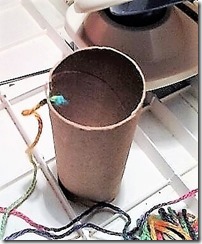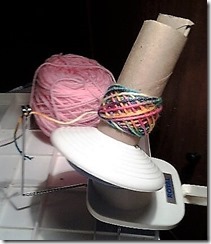 |
| Pansies in Repose |
This afghan and all other round ripple afghans, that are posted here, are made with basic round ripple afghan pattern found on this blog. It was written so anyone could become a designer. Each pictured afghan has its own “Personality Profile Page” where you will find the detailed schematics needed to create a duplicate.
The Basic Round Ripple Afghan Pattern is here
For those new to the Round Ripple concept, this page is to explain what to expect before you begin.
Materials:
I crochet snug, to allow for those don't I choose no dye lot yarns but that is not possible with the variegated yarns.
*Check your dye lot.
Red Heart Super Saver Yarn,
Size I – 9 or 5.5 mm Susan Bates Silvalume hook.
Finished Size Approximately 70 inches point tip to tip
E300 3955
* Wildflower (4) 5 oz. skeins
E300 358 Lavender (1) 7 oz. skein
E 300 385 Royal Blue (1) 7 oz. skein
E300 672 Spring Green (2) 7 oz. skeins
Once the points are established this pattern is a three (3) round repeat. In order to keep your project flat you will be working one (1) round with even shells, in the point, followed by two (2) rounds with increase shells.
All rounds are worked face up and all rounds are Joined.
All rounds skip two stitches at the bottom of the points, they are always the last stitch of the point you are on and the first stitch of the new point.
Join every round
Special Stitch Patterns:
Even shell = (dc, ch 2, dc) in two chain space of each point.
Increase shell = (2 dc, ch 2, 2 dc) in two chain space of each point.
Red indicates a round with even shells
Note: Always skip the 2 stitches at the bottom of the points.
CHANGING COLORS * When changing colors always rotate your project one (1) point clockwise to avoid a pronounced joining line. Starting in the valley between points, skip the first stitch and join new color in the second stitch, on the right hand side of your beginning point. Work designated pattern stitch around.
Pattern: Start with a "magic circle" or Ch 4 using Wildflower
Round 1: Ch 2, counts as first dc throughout pattern, work 11 dc in ring, join with sl st in top of ch 2 throughout pattern. (12 dc)
Round 2: Ch 4, dc in same st, in next dc work, (*1 dc ch 2, 1 dc) repeat around, join to the second chain of the beginning 3 chain. Creates 12 even shells.
Round 3: Sl st in first ch 2 sp, Ch 2, counts as first dc, 1 dc, ch 2, 2 dc, all in same space, increase shell made, work (*2 dc, ch 2, 2 dc, in each chain 1 space). (12 increase shells)
Round 4: Sl st in first st, ch 2, counts as first dc, in ch 2 space work, * (2 dc, ch 2, 2 dc), dc in next st, sk 2 sts, dc in next st , repeat around, ending sk 2 sts. 6 dc each point
Round 5: Ch 2, dc in next dc, in ch 2 space work , (*1 dc, ch 2, 1 dc) dc in next 2 dc, skip next 2 dc, dc in next 2 sts.) Repeat from * around, sk last st, join to top of ch 2. Each point should now have ((2 dc, an “even shell”, 2 dc )) for a total of 6 dc each point
Round 6: Ch 2, dc in next st, (*work an increase shell in ch 2 space, dc in each of next 2 dc, skip the next 2 sts, dc in each of next 2 dc.) Repeat from * around, ending with skip last st. (Each point now has 8 stitches (2 on each side of the increase shell)
Round 7: Ch 2, dc in next 2 dc to point, work increase shell in point, dc in next 3 dc, working in established pattern, always skipping 2 sts in the valley, Repeat from * around, ending with skip 1 st. (each point has 10 sts)
Round 8: ch 2, dc in next 2 sts, * work even shell in ch 2 space, dc in next 3 sts, skip next 2 sts, dc in the next 3 sts. Repeat from * around, ending with skip last st. Each point now has 4 dc, an even shell, 4 dc for a total of 10 stitches
Round 9: Sl st into next st, Ch 2, dc in each stitch to point, work “increase shell: in point, dc in each st to valley, sk 2 sts. Repeat from * around, ending with skip last st.
Round 10: Sl st into next st, ch 2, *dc to point, work increase shell in ch 2 space of point, dc in each stitch to valley, skip 2 sts, Repeat from * around, ending with skip 2 sts. .
Round 11: Join Lavender as per *color change, ch 2, working in established pattern sequence complete this round as an even round. Round 12: Work double crochet in pattern sequence, as an increase round,
Round 13: Join Spring Green, Single Crochet (instead of double crochet) in each stitch to point, working (2 sc, ch 3, 2 sc) in point, continue around.

Round 14: Join Royal Blue, chain 2, double crochet in each stitch to the point (1 dc, ch 2, 1 dc) in ch 3 space of point continue around, working as an even shell round.
Round 15: Join Spring Green with a single crochet in the valley between the points. Chain 3, skip 3 stitches, single crochet between the next 2 double crochet, repeat to point, work (sc, ch 3, sc) to creates a loop in point, continue pattern sequence to valley, sc in valley between points.
Round 16: Join Royal Blue in the first 3 chain loop, chain 2, 2 dc in same space, work 3 dc in each 3 chain space to point, work ( 2 dc, ch 2, 2 dc) in point, follow pattern stitch around.
Round 17: Join Spring Green, working pattern sequence for even round, Single Crochet instead of double crochet, sc in each stitch to point, working (1 sc, ch 3, 1 sc) in point, continue around.
Round 18: Join Lavender, in double crochet, work as increase round
Round 19: With Lavender, in double crochet, work as increase round
Round 20 Join Wildflower, work rounds 20 through 29 in double crochet following pattern sequence.
Red indicates even rounds:
Rounds 21, 22, 23, 24, 25, 26, 27, 28, 29
Round 30: Join Lavender as per *color change, increase round
Round 31: Work double crochet, work as increase round
Round 32: Join Spring Green, Single Crochet (instead of double crochet) in each stitch to point, working (1 sc, ch 3, 1 sc) in point, continue pattern sequence around.
Round 33: Join Royal Blue, double crochet in each stitch to the point (2 dc, ch 2, 2 dc) in ch 3 space of point continue around, working as an increase shell round.
Round 34: Join Spring Green with a Single Crochet in first working stitch, chain 3, skip 3 stitches, single crochet between the next 2 double crochet, repeat to point, work (2 sc, ch 3, 2 sc) to creates a loop in point, continue pattern sequence as an increase around.
Round 35: Join Royal Blue in the first 3 chain loop, chain 2, 2 dc in same space, work 3 dc in each 3 chain space to point, work ( 2 dc, ch 2, 2 dc ) in point, follow pattern stitch around.
Round 36: Join Spring Green, working pattern sequence for even round, Single Crochet instead of double crochet, sc in each stitch to point, working (1 sc, ch 3, 1 sc) in point, continue around.
Round 37: Join Lavender double crochet per pattern sequence
Round 38: Work double crochet in pattern sequence,
Round 39: Join Wildflower work double crochet per pattern sequence,
Round 40: Work in double crochet
Round 41: Work in double crochet
Border Pattern Stitch = (dc, ch 1, dc, in same space) “V” stitch made.

You will be working (“V” stitch, ch 3, “V” stitch) in the points.
Count backward from the point to the bottom to determine your starting stitch. You will be skipping the 2 stitches at the bottom as the basic pattern requires.
Note: here the number of stitches worked out that I would have to miss 4 stitches in the valley which would be too many. To fix this I worked 1 dc, and skipped 1 stitch, before starting the "V" stitch pattern, ending each point with sk 1 stitch, 1 dc in the last stitch. This creates an inverted "V" over the 2 skipped stitches in the valley.
 Round 1
Round 1 Join spring green in the designated stitch, ch 4, dc in same space, first “V” st, (*sk 2 stitches, “V” st in next st to point* ) Work “V” st, chain 3 “V” st in point, work pattern stitch to bottom of point and skip number of stitches needed to keep sides even. Work around, join to third chain of beginning chain 4. (You will need the extra stitches in the points to keep the pattern flat)
Round 2: Sl st into center of the “V” stitch, ch 4, dc in same space, “V” st in the center of each “V” st to the point, For the point work “V” st, in the first “V” ; “V” st in the 3 chain space, “V” st in the 2nd existing “V” st all in the same point, work around.
Repeat Round 2 till border is the width you want up to the last round.
Final Round Picot stitch: Double crochet, chain 3, slip st in first chain, dc in same stitch = "V" st with picot.
Final Round Work "V" st with picot st, in the center of each “V” st of the previous row, working (dc, picot, dc, picot, dc, picot, dc) in the center 3 chain space of each point.
.jpg)






.jpg)














